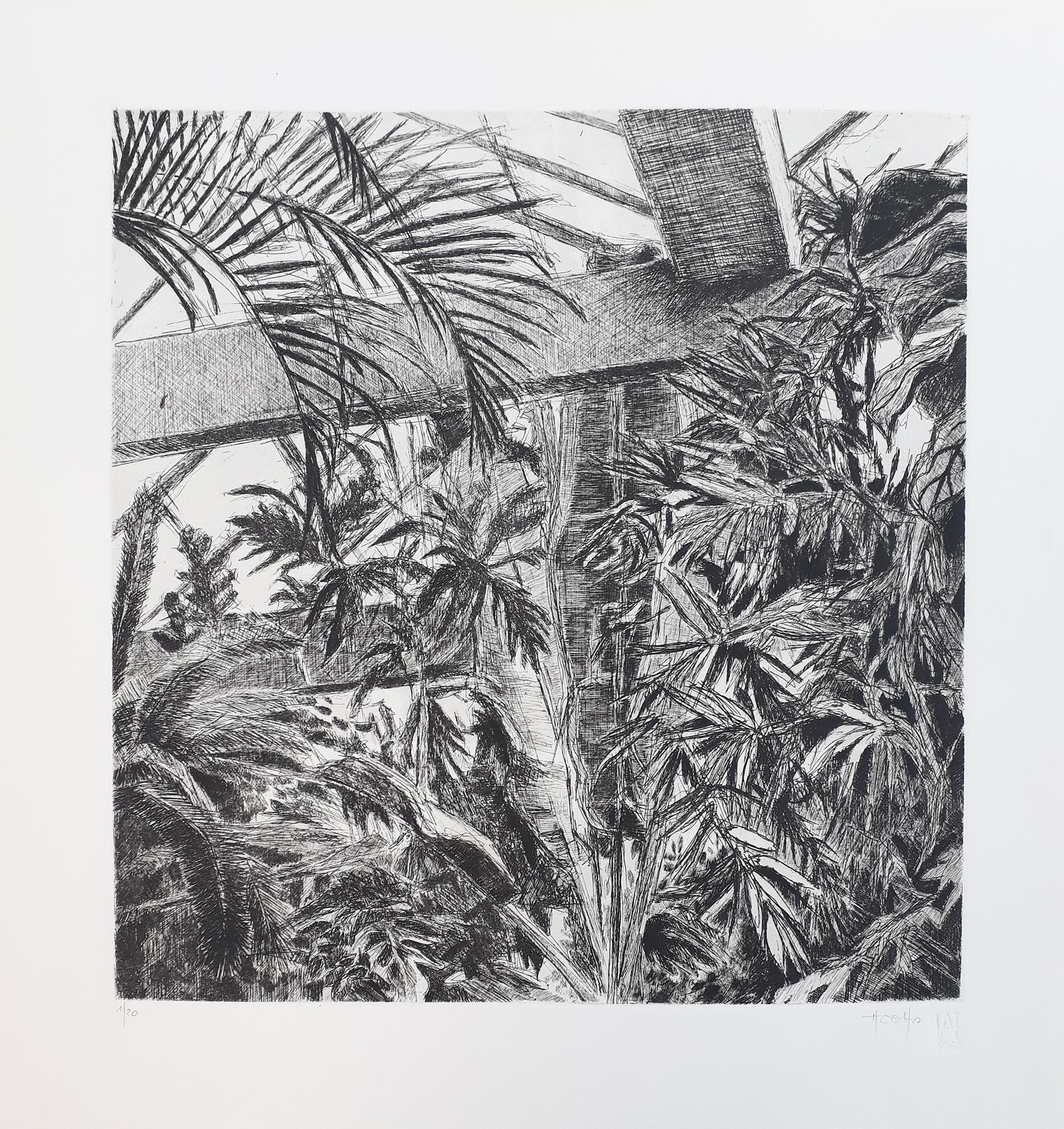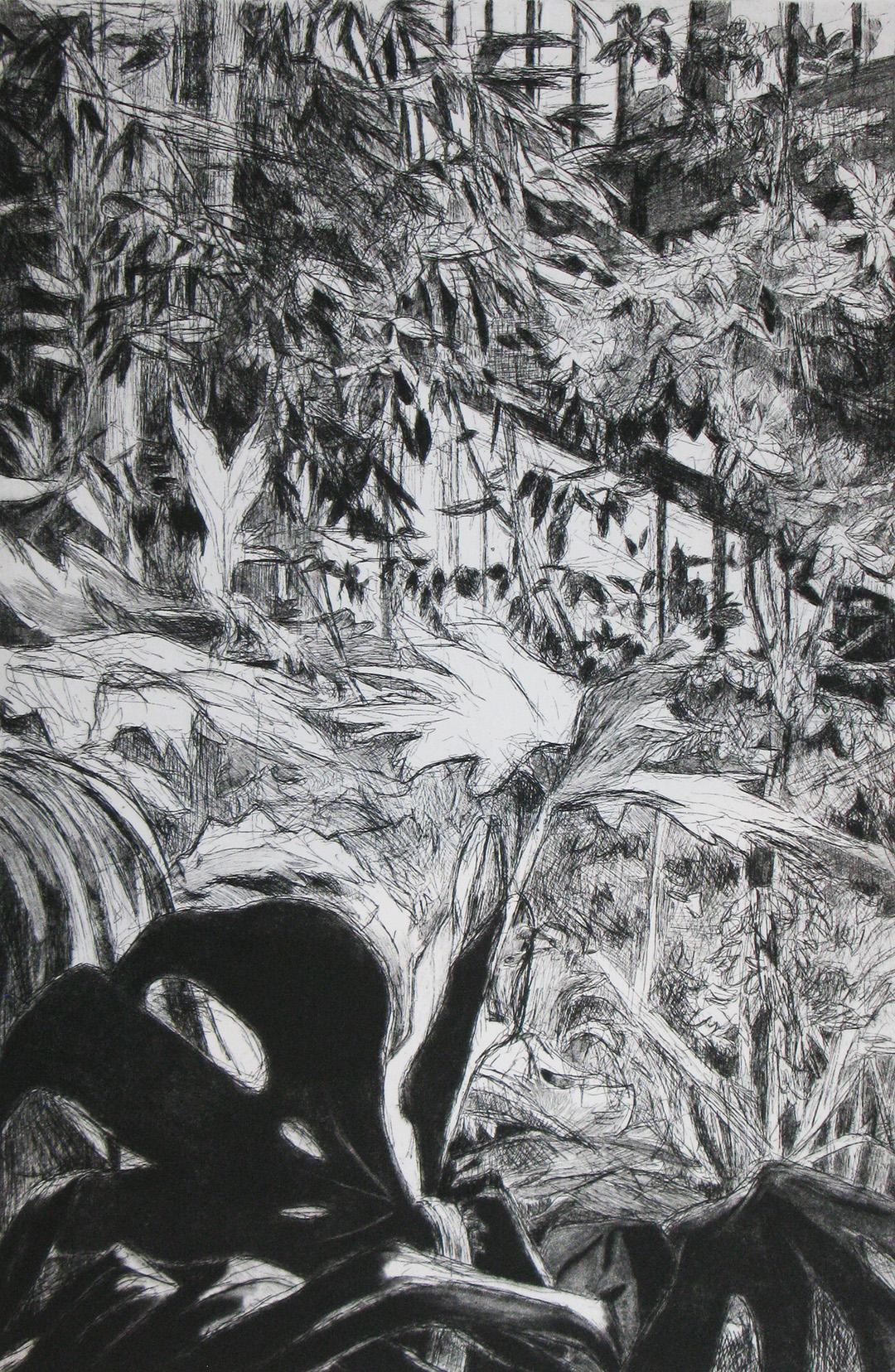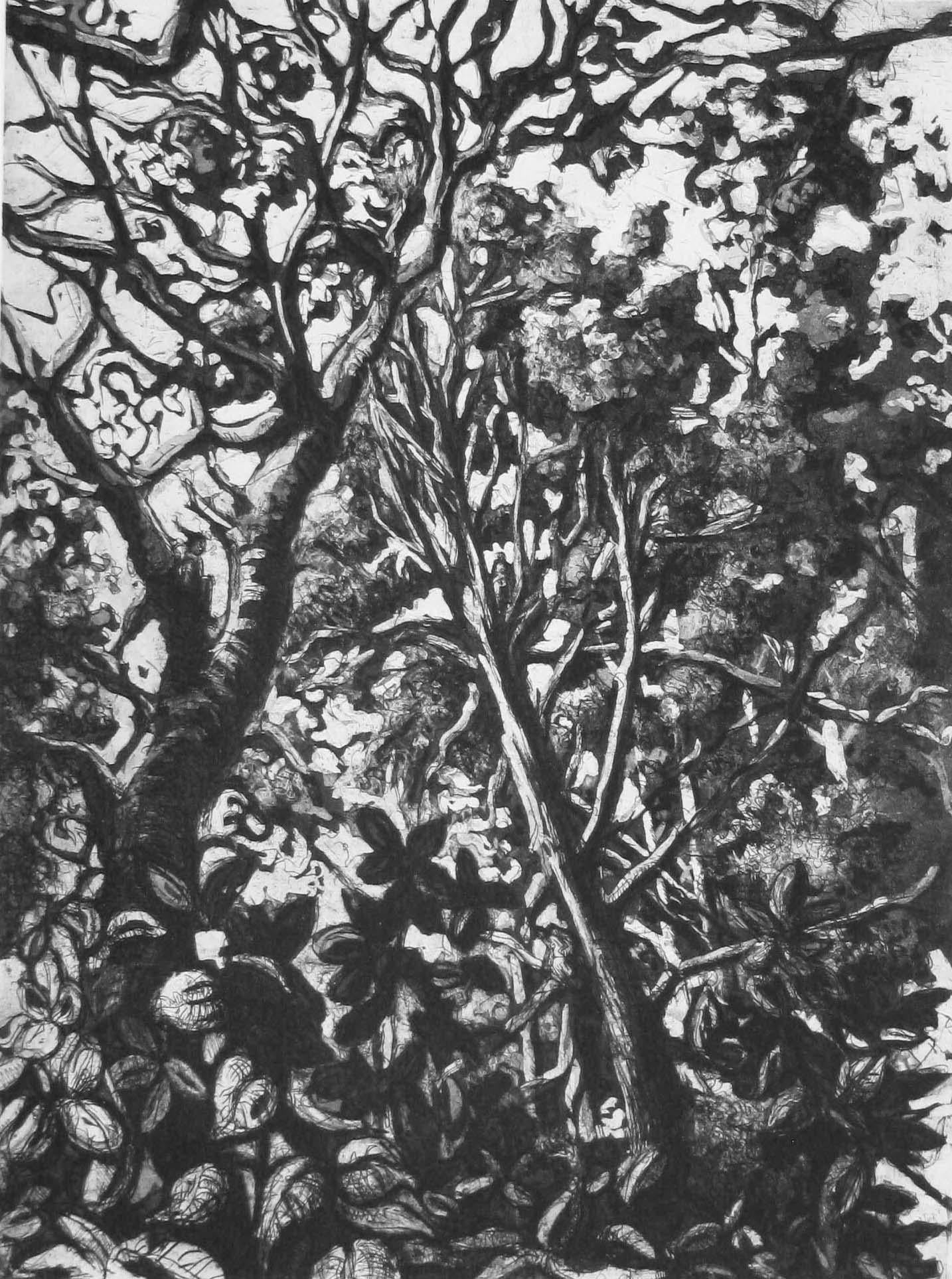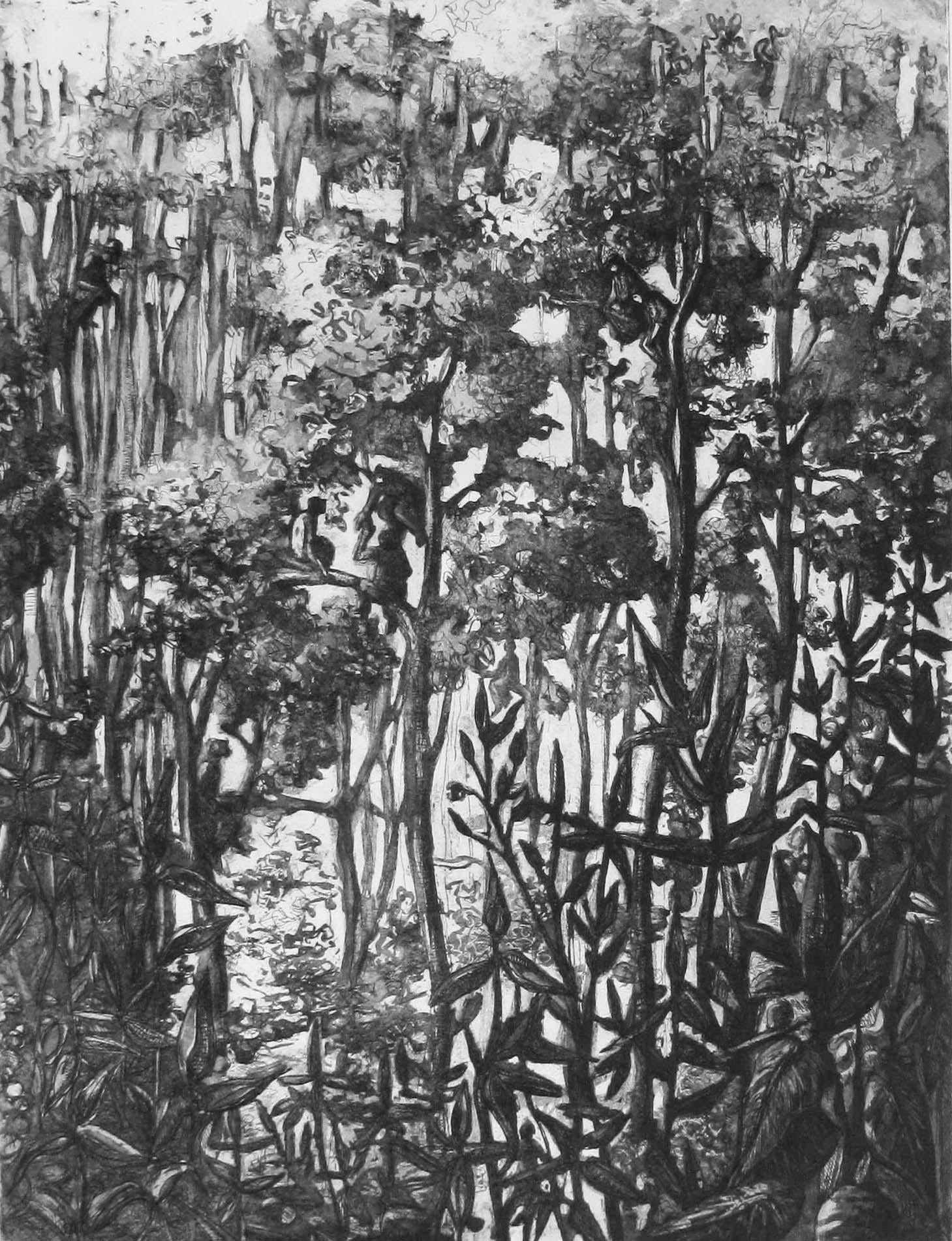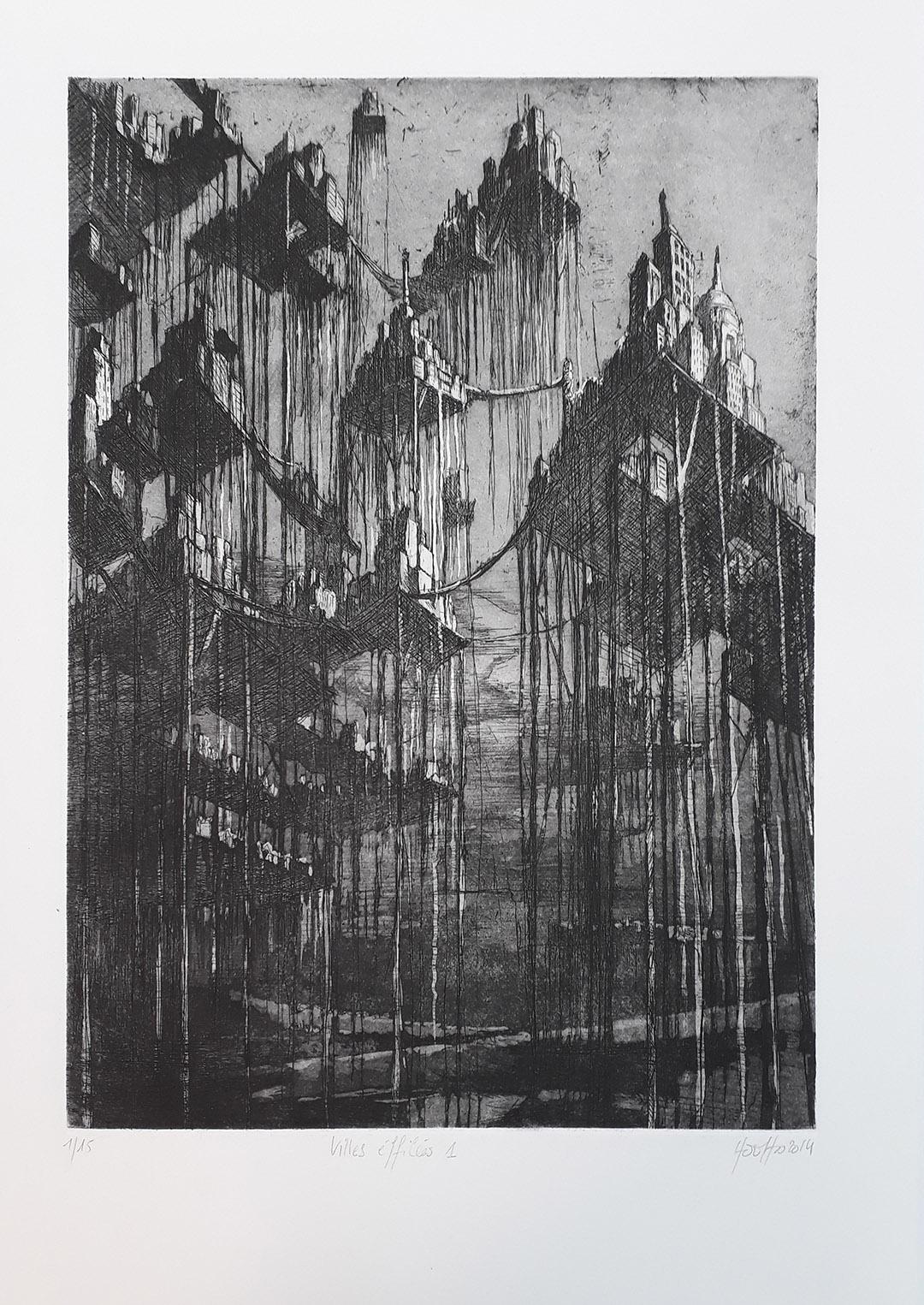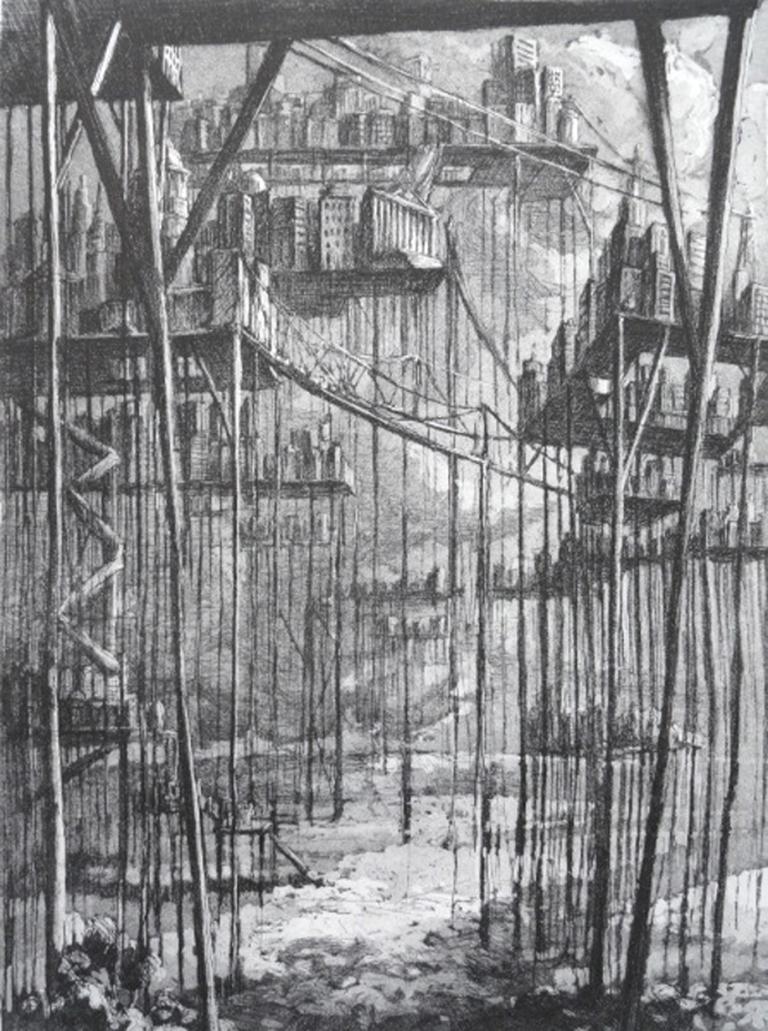John DobbsAbstract Modernist Drawing of a Nude Man with Winged Figure, Angel1978
1978
About the Item
- Creator:John Dobbs (1931 - 1911, American)
- Creation Year:1978
- Dimensions:Height: 10.25 in (26.04 cm)Width: 9.5 in (24.13 cm)
- Medium:
- Movement & Style:
- Period:
- Condition:minor waving to paper. minor wear.
- Gallery Location:Surfside, FL
- Reference Number:1stDibs: LU38213082912
John Dobbs
John Dobbs had many solo shows at galleries, universities and museums. His work was exhibited at the Museum of Modern Art, Whitney Museum of American Art, American Academy of Arts and Letters, Butler Institute of American Art in Ohio, and Salon Populiste in Paris. Dobbs’ paintings are part of the permanent collections of the Hirshhorn Museum, Washington, DC; the Montclair Art Museum, Montclair, New Jersey; the Neuberger Museum of Art, Purchase, New York; the Canton Museum of Art, Canton, Ohio and the Springfield Museum of Art, Springfield, Massachusetts. From 1972–96, Dobbs was a professor of art at John Jay College of Criminal Justice of the City University of New York. He was a member of the National Academy of Design, to which he was elected in 1976.
- ShippingRetrieving quote...Ships From: Surfside, FL
- Return PolicyA return for this item may be initiated within 3 days of delivery.
- Man in Raincoat, Vintage Modern Watercolor PaintingBy John DobbsLocated in Surfside, FLAbstracted portrait of a man in a raincoat by artist John Dobbs. This impressionistic depiction of the subject allows for stylistic references to Monet, and Sisley. John Barnes Dobbs, a determinedly figurative painter who launched his career in the 1950s against the prevailing winds of Abstract Expressionism, lived to see a time when Realism would coexist with Abstraction, Minimalism, Conceptual Art and a variety of other artistic movements. On August 9 Dobbs died at his home in New York’s Greenwich Village at the age of 80. In his final works, Dobbs’ figures appear against flat backgrounds, iconic as the images on tarot cards: acrobats, boxers and contortionists, struggling against the physics of their own bodies and that of the universe. Dobbs had many solo shows at galleries, universities and museums. His work was exhibited at the Museum of Modern Art, the Whitney Museum, the American Academy of Arts and Letters, the Butler Institute of American Art in Ohio, and the Salon Populiste in Paris. Dobbs’ paintings are part of the permanent collections of the Hirshhorn Museum, Washington, DC; the Montclair Art Museum, Montclair, NJ; the Neuberger Museum, Purchase, NY; the Canton Museum of Art, Canton, OH and the Springfield Museum of Art, Springfield, MA. From 1972 to 1996, he was a Professor of Art at John Jay College, City University of New York. He was a member of the National Academy, to which he was elected in 1976. Born in 1931 in a small house by the Lackawanna Railroad...Category
20th Century Contemporary Figurative Drawings and Watercolors
MaterialsWatercolor
- Israeli Surrealist Painting Female Circus Performer Acrobat with CatBy Haya Graetz RanLocated in Surfside, FLVoluptuous, ala Fernando Botero, female circus performer with spectators and cat. Haya Ran was born in Holon, Israel in 1948 on the same date as the State of Israel was founded. From 1968 to 1973 Ran lived on Kibbutz Sasa. After her stay on the Kibbutz, she took courses on Graphics at The Technion 1975-1978. Tel Hai Institute Ran paints with water colors, using a multilayer method, which creates an illusion of tempera. Ran came up with this technique herself, influenced medieval painters. Ran says that the reds, browns, and golds in most of her feminist works are inspired by the performing arts: the circus, clowns, acrobats, dancers, and the fantastic. Haya Ran doesn’t identify today with any particular artistic school. Her works are born out of personal experiences and feelings. They come from the remembrances of her past, of her life and her experiences as a child, and from the fantasies she entertains about them. Her subjects emanate from her private, inner world. Haya Ran focuses on the world of the female. Her women are a peculiar lot. Their dimensions are offer wide, distorted, and grotesque, yet their poses and settings are as enticing and charming as they are sexually arousing. Others of Haya Ran’s women remain attached to elements of a lost childish innocence; dolls, wooden horses, masks, and wooden birds. Her works are executed with watercolors on paper. Her technique resembles that of Renaissance tempera. She superimposes strata and blends them together to create the impression of a past era. She creates not by putting down on paper her sudden impulses, but by devoting painstaking attention to the smallest details over countless hours. Selected Solo Exhibitions “Izraeliyot” / Dwek Gallery, Adenauer Conference Center, Mishkenot Sha’ananim, “Plowing” / Gerstein Gallery, Tel Aviv. Curated by Ora Krauss. “Suricattas” / Seemann Contemporary Art Gallery, Tel Aviv. Curated by Hagai Segev. “Encrypting” / The Israeli Artists Gallery, Kabri. Curated by Drora Dekel. Tokyo, Japan Museum of Art “O” “Calligraphy” / HaGalleria, Moshav Shoevah. Curated by Tirtzah Yallon Kolton. ESPACE RACHI, Paris, France. Curated by Hana Landau. Brucke Gallery, Braunschweig, Germany Gallery Vandorn, Paris, France Goldman Gallery, Haifa, Israel Grafica 3 Gallery, Haifa, Israel Select Group Exhibitions: Group Exhibitions The Second Biennale for Israeli Ceramics Eretz Israel Museum, Ramat Aviv, Tel Aviv Stern Gallery, Tel Aviv Artists:Reuven Rubin, Chaya Graetz Ran, Dorit Feldman, Anna Ticho, Abraham Hadad. Israeli Portrait Wilfrid Israel Museum, Oriental Art and Studies, Kibbutz Hazorea Artists: Shoshana Heimann,Genia Berger, Avraham Ofek, Jean David, Jakob Steinhardt, David Sharir, Ruth Schloss Ruth Zarfati Rudi Lehmann and others With this Ring - Wedding Ceremonies in Contemporary Art Beit Hatfutsot, Tel Aviv Artists: Nelly Agassi, Lital Dotan, Shai Azoulay, Avraham Baron Gallery, Beer Sheva Artists: Miki Kratsman, Adi Nes...Category
20th Century Contemporary Figurative Drawings and Watercolors
MaterialsPaper, Watercolor
- Large Israeli Watercolor Gouache Painting Jerusalem Landscape Moshe GatBy Moshe GatLocated in Surfside, FLA signed watercolor gouache painting in frame. Framed: 26.5 X 32.5 Image: 19 X 25 Moshe Gat was born in Haifa in 1935. in 1952 he began his studies at the Bezalel School, in Jeru...Category
Mid-20th Century Expressionist Figurative Drawings and Watercolors
MaterialsWatercolor, Gouache
- Watercolor Painting Three Black MenBy Irene Hodes NewmanLocated in Surfside, FLThis does not appear to be signed but was framed with her biography verso. Irene Hodes Newman, an Impressionist painter, was known for her watercolors of black people, African American Gullah and Creole people and their culture in New Orleans. born in Cameron, Missouri. Newman was well known for her images of birds, atmospheric scenes of the Georgia Atlantic coast, and cityscapes from Savannah to New York City. A member of the Baltimore Water Color Club, the American Artists Professional League, the National Arts Club in New York City and the Audubon Artists Society. Active from the late 1930s until the mid-1950s, her work hung in exhibitions at the Corcoran Gallery of Art in Washington, D.C. (1939); The American Water Color Society, New York (1939, 1941, 1942); the Morton Gallery, New York (1939, 1940); the Allied Artists of America, New York (1939-1942); the Baltimore Museum of Art, Maryland (1939, 1940, 1948-52); the Art Institute of Chicago (1940, 1941, 1949); the Kansas City Art Institute, Missouri (1940); the Brooklyn Museum (1941); the San Diego Fine Arts Society, California (1941); the Metropolitan Museum of Art, New York (1942); the Springfield Museum of Art, Massachusetts (1945); the Toledo Museum of Art, Ohio (1950); the Pennsylvania Academy of Fine Arts, Philadelphia (1950); and the National Gallery of Art, Washington (1955). From 1948 until 1955, Newman showed at the Milch Gallery in New York City. In 1949 she was featured there in a show called "Six Watercolorists." During this period she was based in New York City, showing paintings of birds as well as New York views...Category
20th Century Post-Impressionist Figurative Drawings and Watercolors
MaterialsWatercolor
- Vintage Israel Bezalel School Watercolor Painting Artist with Model Kibbutz LifeBy Moshe AvniLocated in Surfside, FLMoshe Avni was born in 1937, in Kibbutz Kfar Blum in the Upper Galilee in Israel. Presently, he lives and paints in Jerusalem. During the years 1956-1957, he studied Painting and Gra...Category
1960s Modern Figurative Drawings and Watercolors
MaterialsWatercolor, Pen
- Chaim Gross Mid Century Mod Judaica Jewish Watercolor Painting Rabbis WPA ArtistBy Chaim GrossLocated in Surfside, FLChaim Gross (American, 1904-1991) Watercolor painting Rabbinical Talmudic Discussion Hand signed 17 x 29 framed, paper 10 x 22 Chaim Gross (March 17, 1904 – May 5, 1991) was an American modernist sculptor and educator. Gross was born to a Jewish family in Austrian Galicia, in the village of Wolowa (now known as Mezhgorye, Ukraine), in the Carpathian Mountains. In 1911, his family moved to Kolomyia (which was annexed into the Ukrainian USSR in 1939 and became part of newly independent Ukraine in 1991). When World War I ended, Gross and brother Avrom-Leib went to Budapest to join their older siblings Sarah and Pinkas. Gross applied to and was accepted by the art academy in Budapest and studied under the painter Béla Uitz, though within a year a new regime under Miklos Horthy took over and attempted to expel all Jews and foreigners from the country. After being deported from Hungary, Gross began art studies at the Kunstgewerbeschule in Vienna, Austria shortly before immigrating to the United States in 1921. Gross's studies continued in the United States at the Beaux-Arts Institute of Design, where he studied with Elie Nadelman and others, and at the Art Students League of New York, with Robert Laurent. He also attended the Educational Alliance Art School, studying under Abbo Ostrowsky, at the same time as Moses Soyer and Peter Blume. In 1926 Gross began teaching at The Educational Alliance, and continued teaching there for the next 50 years. Louise Nevelson was among his students at the Alliance (in 1934), during the time she was transitioning from painting to sculpture. In the late 1920s and early 1930s he exhibited at the Salons of America exhibitions at the Anderson Galleries and, beginning in 1928, at the Whitney Studio Club. In 1929, Gross experimented with printmaking, and created an important group of 15 linocuts and lithographs of landscapes, New York City streets and parks, women in interiors, the circus, and vaudeville. The entire suite is now in the collection of the Philadelphia Museum of Art. Gross returned to the medium of printmaking in the 1960s, and produced approximately 200 works in the medium over the next two decades. For more than sixty years Chaim Gross's art has expressed optimistic, affirming themes, Judaica, balancing acrobats, cyclists, trapeze artists and mothers and children convey joyfulness, modernism, exuberance, love, and intimacy. This aspect of his work remained consistent with his Jewish Hasidic heritage, which teaches that only in his childlike happiness is man nearest to God. In March 1932 Gross had his first solo exhibition at Gallery 144 in New York City. For a short time they represented Gross, as well as his friends Milton Avery, Moses Soyer, Ahron Ben-Shmuel and others. Gross was primarily a practitioner of the direct carving method, with the majority of his work being carved from wood. Other direct carvers in early 20th-century American art include William Zorach, Jose de Creeft, and Robert Laurent. Works by Chaim Gross can be found in major museums and private collections throughout the United States, with substantial holdings (27 sculptures) at the Hirshhorn Museum and Sculpture Garden. A key work from this era, now at the Smithsonian American Art Museum, is the 1932 birds-eye maple Acrobatic Performers, which is also only one and one quarter inch thick. In 1933 Gross joined the government's PWAP (Public Works of Art Project), which transitioned into the WPA (Works Progress Administration), which Gross worked for later in the 1930s. Under these programs Gross taught and demonstrated art, made sculptures that were placed in schools and public colleges, made work for Federal buildings including the Federal Trade Commission Building, and for the France Overseas and Finnish Buildings at the 1939 New York World's Fair. Gross was also recognized during these years with a silver medal at the Exposition universelle de 1937 in Paris, and in 1942, with a purchase prize at the Metropolitan Museum of Art's "Artists for Victory" exhibition for his wood sculpture of famed circus performer Lillian Leitzel. In 1949 Gross sketched Chaim Weizmann, Israeli President, at several functions in New York City where Weizmann was speaking, Gross completed the bust in bronze later that year. Gross returned to Israel for three months in 1951 (the second of many trips there in the postwar years) to paint a series of 40 watercolors of life in various cities. This series was exhibited at the Jewish Museum (Manhattan) in 1953. He also did some important Hebrew medals. In the 1950s Gross began to make more bronze sculptures alongside his wood and stone pieces, and in 1957 and 1959 he traveled to Rome to work with famed bronze foundries including the Nicci foundry. At the end of the decade Gross was working primarily in bronze which allowed him to create open forms, large-scale works and of course, multiple casts. Gross's large-scale bronze The Family, donated to New York City in 1991 in honor of Mayor Ed Koch, and installed at the Bleecker Street Park at 11th street, is now a fixture of Greenwich Village. In 1959, a survey of Gross's sculpture in wood, stone, and bronze was featured in the exhibit Four American Expressionists curated by Lloyd Goodrich at the Whitney Museum of American Art, with work by Abraham Rattner, Doris Caesar, and Karl Knaths. In 1976, a selection from Gross's important collection of historic African sculpture, formed since the late 1930s, was exhibited at the Worcester Art Museum in the show The Sculptor's Eye: The African Art Collection of Mr. and Mrs. Chaim Gross. Gross was elected into the National Academy of Design as an Associate member, and became a full Academician in 1981. In 1984, he was inducted into the American Academy of Arts and Letters, with Jacob Lawrence and Lukas Foss. In the fall of 1991, Allen Ginsberg gave an important tribute to Gross at the American Academy of Arts and Letters, which is published in their Proceedings. In 1994, Forum Gallery, which now represents the Chaim Gross estate, held a memorial exhibition featuring a sixty-year survey of Gross's work.In March 1932 Gross had his first solo exhibition at Gallery 144 in New York City. For a short time they represented Gross, as well as his friends Milton Avery, Moses Soyer, Ahron Ben-Shmuel and others. Gross was primarily a practitioner of the direct carving method, with the majority of his work being carved from wood. Other direct carvers in early 20th-century American art include William Zorach, Jose de Creeft, and Robert Laurent. Works by Chaim Gross can be found in major museums and private collections throughout the United States, with substantial holdings (27 sculptures) at the Hirshhorn Museum and Sculpture Garden. A key work from this era, now at the Smithsonian American Art Museum, is the 1932 birds-eye maple Acrobatic Performers, which is also only one and one quarter inch thick. In 1933 Gross joined the government's PWAP (Public Works of Art Project), which transitioned into the WPA (Works Progress Administration), which Gross worked for later in the 1930s. Under these programs Gross taught and demonstrated art, made sculptures that were placed in schools and public colleges, made work for Federal buildings including the Federal Trade Commission Building, and for the France Overseas and Finnish Buildings at the 1939 New York World's Fair. Gross was also recognized during these years with a silver medal at the Exposition universelle de 1937 in Paris, and in 1942, with a purchase prize at the Metropolitan Museum of Art's "Artists for Victory" exhibition for his wood sculpture of famed circus performer Lillian Leitzel. In 1949 Gross sketched Chaim Weizmann, President of Israel, at several functions in New York City where Weizmann was speaking, Gross completed the bust in bronze later that year. Gross returned to Israel for three months in 1951 (the second of many trips there in the postwar years) to paint a series of 40 watercolors of life in various cities. This series was exhibited at the Jewish Museum (Manhattan) in 1953. In the 1950s Gross began to make more bronze sculptures alongside his wood and stone pieces, and in 1957 and 1959 he traveled to Rome to work with famed bronze foundries including the Nicci foundry. At the end of the decade Gross was working primarily in bronze which allowed him to create open forms, large-scale works and of course, multiple casts. Gross's large-scale bronze The Family, donated to New York City in 1991 in honor of Mayor Ed Koch, and installed at the Bleecker Street Park at 11th street, is now a fixture of Greenwich Village. In 1959, a survey of Gross's sculpture in wood, stone, and bronze was featured in the exhibit Four American Expressionists curated by Lloyd Goodrich at the Whitney Museum of American Art, with work by Abraham Rattner, Doris Caesar, and Karl Knaths. In 1976, a selection from Gross's important collection of historic African sculpture, formed since the late 1930s, was exhibited at the Worcester Art Museum in the show The Sculptor's Eye: The African Art Collection of Mr. and Mrs. Chaim Gross. Gross was elected into the National Academy of Design as an Associate member, and became a full Academician in 1981. In 1984, he was inducted into the American Academy of Arts and Letters, with Jacob Lawrence and Lukas Foss. In the fall of 1991, Allen Ginsberg gave an important tribute to Gross at the American Academy of Arts and Letters, which is published in their Proceedings. In 1994, Forum Gallery, which now represents the Chaim Gross estate, held a memorial exhibition featuring a sixty-year survey of Gross's work. Gross was a professor of printmaking and sculpture at both the Educational Alliance and the New School for Social Research in New York City, as well as at the Brooklyn Museum Art School, the MoMA art school, the Art Student's League and the New Art School (which Gross ran briefly with Alexander Dobkin...Category
Mid-20th Century American Modern Figurative Drawings and Watercolors
MaterialsPaper, Watercolor
- Tropique IILocated in STRASBOURG, FRNé à Strasbourg le 19 novembre 1965 Diplômé de sculpture de l’Ecole Supérieur des Arts Décoratifs de Strasbourg avec Patrick Lang “Toutes ces silhouettes qui habitent mon travail so...Category
2010s Contemporary Figurative Drawings and Watercolors
MaterialsPaper, Watercolor
- Jungle urbaine IVLocated in STRASBOURG, FRNé à Strasbourg le 19 novembre 1965 Diplômé de sculpture de l’Ecole Supérieur des Arts Décoratifs de Strasbourg avec Patrick Lang “Toutes ces silhouettes qui habitent mon travail so...Category
2010s Contemporary Figurative Drawings and Watercolors
MaterialsPaper, Watercolor
- Les égarées IIILocated in STRASBOURG, FRNé à Strasbourg le 19 novembre 1965 Diplômé de sculpture de l’Ecole Supérieur des Arts Décoratifs de Strasbourg avec Patrick Lang “Toutes ces silhouettes qui habitent mon travail so...Category
2010s Contemporary Figurative Drawings and Watercolors
MaterialsPaper, Watercolor
- Les égarées IILocated in STRASBOURG, FRNé à Strasbourg le 19 novembre 1965 Diplômé de sculpture de l’Ecole Supérieur des Arts Décoratifs de Strasbourg avec Patrick Lang “Toutes ces silhouettes qui habitent mon travail so...Category
2010s Contemporary Figurative Drawings and Watercolors
MaterialsPaper, Watercolor
- Les villes éffilées IIILocated in STRASBOURG, FRNé à Strasbourg le 19 novembre 1965 Diplômé de sculpture de l’Ecole Supérieur des Arts Décoratifs de Strasbourg avec Patrick Lang “Toutes ces silhouettes qui habitent mon travail so...Category
2010s Contemporary Figurative Drawings and Watercolors
MaterialsPaper, Watercolor
- Les villes éffiléesLocated in STRASBOURG, FRNé à Strasbourg le 19 novembre 1965 Diplômé de sculpture de l’Ecole Supérieur des Arts Décoratifs de Strasbourg avec Patrick Lang “Toutes ces silhouettes qui habitent mon travail so...Category
2010s Contemporary Figurative Drawings and Watercolors
MaterialsPaper, Watercolor
